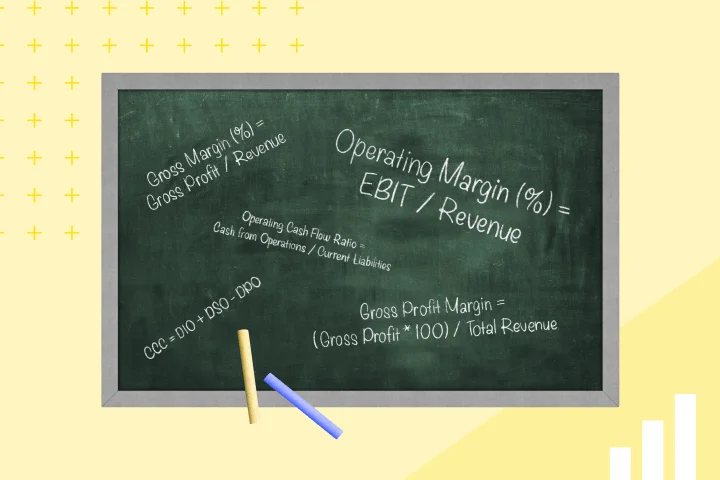ACH and wire transfers are two of the most common payment transfer systems — but which one should you use for business payments?
ACH and wire transfers both allow users to send and receive payments electronically. However, they don’t work in exactly the same way, and each has their own advantages and disadvantages. Businesses should be aware of the implications of each payment method before determining the right one for making their own corporate payments.
In this blog, we will explore the differences between ACH and wire transfers, specifically for use with business payments. By the end, you will be able to make an informed decision about how to make your payments quickly and efficiently.
What Are ACH Transfers?
ACH transfers use the Automated Clearing House (ACH) network to facilitate bank-to-bank payments or deposits. It is a form of batch payment processing system governed by the National Automated Clearing House Network (NACHA).
Many of us have used ACH without even realizing it. When you receive your salary, your employer is using ACH to send the funds. Or, perhaps you’re using ACH when you pay your bills online. Businesses often use ACH transfers to pay employees and vendors.
ACH balances the debit and credit transactions to transfer funds between bank accounts. The payer will see an ACH debit on their account for the funds they sent. Consequently, the receiver of funds will see an ACH credit for the same amount on their account.
These transactions can sometimes take a few days to be processed and cleared, but are often available without any fees.
What Is a Wire Transfer?
Wire transfer is a form of bank-to-bank funds transfer. You can send money directly from your bank account to another bank account in either the same bank or a different one.
When you transfer via wire, the money first reaches the bank of the recipient. After that, the receiving bank clears the funds and deposits them in the receiver account.
Both wire transfer and ACH can be used for business payments. But which one makes more sense for your needs?
Key Differences: ACH Payments vs. Wire Transfers
One of the main differences between the two forms of bank payments is that wire transfers are individual payments, while ACH transfers are processed in batches. Here are some of the other differences between ACH payments and wire transfers.
Reversibility
ACH payments can be reversed, such as when an employer overpays an employee and wishes to correct the mistake.
Wire transfers are permanent. You cannot reverse a wire transfer after you have sent money from your account.
Cost
ACH payments are free (or very low cost) to transfer. Businesses can send wages to employee bank accounts using direct deposit without any cost. However, you may need to pay fees if you use a third-party service like a mobile app.
Wire transfers typically cost a fee ranging from $10 to $35 for domestic transfers. International wire transfers can cost more.
Speed
ACH payments can take up to a few days to be processed and cleared, once the bank has confirmed that there are sufficient funds in the account.
However, our modern clearing system does sometimes offer businesses the option for same-day ACH transfer. You can make a direct deposit in the morning and have the funds cleared and in the receiver’s bank account by evening.
Keep in mind, though, that ACH will not clear funds when the Federal Reserve system is closed on weekends or holidays. As a result, you may have to wait until Monday to get funds sent on Friday evening.
Wire transfers can be sent and received on the same day.
Location
ACH payments can only be transferred domestically. Wire transfers can be sent internationally or domestically.
What Is Global ACH?
A third, lesser known option is global ACH transfers. As the name implies, global ACH transfers are ACH payments that are transferred to an international bank account. In the United States, these are regulated by NACHA. In Europe, these are regulated by Single Euro Payments Area (SEPA).
Because there is not one single governing body for these across the world, some banks or countries will not accept this type of payment.
ACH vs. Wire Transfer: When to Use What
We will assess ACH vs. wire transfer based on a few factors to help you form a better idea. Our analysis will focus on everyday business situations and the payment system that makes sense.
When to Use ACH
ACH is ideal for batch payments or regular transfers. For example, you can use ACH to send salaries to your two hundred employees. Or, you can use ACH to pay monthly or annual taxes and bills. It provides you a free way to process your payments and even facilitates bookkeeping.
When to Use Wire Transfers
Wire transfers, on the contrary, are individual payments. You have to initiate each transfer separately from your online banking platform. As a result, wire transfers make sense for one-time or large payments that are not frequent or recurring, such as a real estate purchase.
Remember, you’ll have to pay fees for each individual wire transfer.
Three Downsides to ACH and Wire Transfers
1. Lack of control
Whether you choose to use an ACH or a wire transfer, once the transaction is underway, it is out of your hands and into the banks of the sender and receiver. This leaves you with little control or transparency while the funds are in motion.
2. Delays
Even same-day transfers are not instant. This can leave employees and vendors waiting on payments that they are expecting and depending on.
3. Security holes
Although ACH and wire transfers are financially secure means of moving funds, they can present other security risks. Because they are not connected to your company’s ERP or accounting software, there is little context provided for each payment. This means that if an employee fudges their hours worked or a vendor overcharges you, the handling banks have no means of noticing the error and stopping the transfer.
Why You Should Consider Corporate Cards Instead
Corporate cards — specifically virtual ones — eliminate the pitfalls associated with ACH and wire transfers.
Control is always in your hands, as you can see and approve the movement of any money. Employees can request approval for purchases, and easily upload a receipt digitally so that every transaction is accounted for.
Furthermore, credit card payments are instantaneous. Especially with pre-loaded cards, there’s no question as to whether there are sufficient funds to complete the transaction.
And, in addition to being a secure means of transferring funds, virtual cards provide extra security. Not only do they eliminate the risks associated with plastic cards (i.e. loss, misplacement, theft), but virtual cards can impose spending limits or lock to specific vendors to ensure that only approved purchases are made.
Plus, cards like those provided by Mesh Payments can help your organization with better overall spend management.
Final Thoughts
Businesses need to be aware of ACH vs. wire transfer nuances to pick the best one for payments.
ACH seems to be a good choice for batch payments at zero cost. Wire transfers can be suitable for one-time payments or when you need to send money quickly.
You can use a mix of both payment methods to pay your business expenses efficiently, but options like virtual cards can provide another alternative while providing additional benefits.
FAQs
An ACH transfer is an electronic payment that uses the ACH network for bank-to-bank transfers.
An ACH transfer debits the payer’s account and credits the receiver’s account, facilitating fund transfers.
Yes, under specific conditions and requirements, ACH transfers can be reversed.
A wire transfer is a direct bank-to-bank transfer of funds.
Wire transfers involve sending money directly from one bank account to another.
Wire transfers are typically irreversible once funds are sent.
ACH transfers are often free or low-cost, while wire transfers involve fees.
ACH transfers may take a few days, while wire transfers can be sent and received on the same day.
ACH transfers are primarily for domestic payments, while wire transfers can be used for both domestic and international payments.
Global ACH refers to international ACH payments regulated by organizations like NACHA and SEPA.
Virtual corporate cards offer control, transparency, instant payments, enhanced security, spending limits, and aid in spend management.
To learn how Mesh Payments can help your company optimize business payments, book a demo today.
-
Get the latest blogs from Mesh by subscribing to our newsletter







